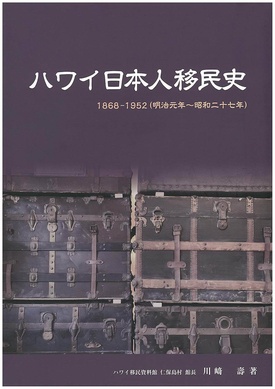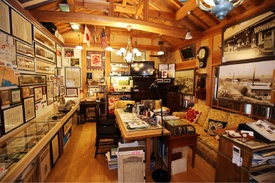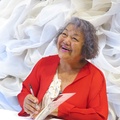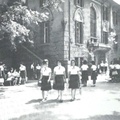
Suddenly, a friend in Japan sent me a copy of “History of Japanese Immigration to Hawaii 1868-1952” (published in 2020 by Kawasaki Hisashi, Director of the Hawaii Immigration History Museum, Nihoshimamura, 3,800 yen, hereafter referred to as “History of Japanese Immigration to Hawaii”).
I was surprised because I thought postal services between Japan and Brazil had been suspended since April last year. It seems that some services have resumed. However, I sent it by SAL in February and it arrived at the end of June, which is four months, so it took about twice as long as usual.
I had never heard of the existence of the "Hawaii Emigration History Museum Nihojimamura." It is a private museum located in Niho, Minami-ku, Hiroshima City, Hiroshima Prefecture. Admission is free, but you must contact the museum in advance by email or other means.
The letter from my friend who sent it to me said, "This book is a condensed version of the director's overwhelming passion for immigrants," and that is certainly true. The A4-sized, 247-page book is packed with illustrations, and I was blown away.
The director's main occupation seems to be construction, but in addition to his busy day job he spent a long time steadily collecting immigration information, built this museum himself, and compiled this immigration history incorporating his collection.
The preface written by Director Kawasaki explains his connection to Hawaii: His older sister was a prewar immigrant to Hawaii, and after the attack on Pearl Harbor, his whole family was sent to an internment camp in California where the most anti-American immigrants were gathered.
It says, "My brother-in-law (cousin) was arrested in Hawaii for being extremely anti-American and was interned at Tule Lake Internment Camp on the US mainland. His wife (my eldest sister) and their entire family of four children accompanied him. When they were liberated after the war, he surprisingly got a job as an interpreter and driver for the British Commonwealth Occupation Forces Headquarters in Kure, Hiroshima Prefecture, and my sister got a job as a cook in the officers' dining hall, and they returned to Japan. They stayed with us for several months until they found a place to live. It was the first time I'd ever met my eldest sister, and this was the beginning of my encounter with Hawaii" (page 2).
The director's message on the museum's website describes an even deeper relationship.
My father worked as a sugar cane train driver on a plantation in Hilo on the Big Island of Hawaii. My one brother and four sisters are Hawaii-born and live there permanently. Of course, they are all American. I was born in Yokohama, so even though we are the same sibling, we are born with different nationalities.
During the Pacific War, the people were divided into allies and enemies. Five of my father's younger siblings immigrated to Hawaii, and all of them have settled there since and built their own families. These families are now in their third, fourth, and fifth generations, and their numbers far exceed those of my family in Japan,'' the self-introduction reads.
In other words, it seems that the director remained in the main family to carry on the Japanese bloodline, and the rest of the family emigrated to Hawaii. I was convinced that they were able to persevere in this work because they still have deep family ties.
Move to Brazil in response to anti-Japanese movements in the United States
According to the "Overseas Emigration Statistics" (JICA, October 1994 edition), Hiroshima Prefecture ranks first by far in the number of Japanese emigrants who left Japan before the war by prefecture. The number of emigrants was about 97,000, accounting for about 15% of all emigrants. They started in Hawaii and are now scattered around the world. In second place is Okinawa Prefecture, followed by Kumamoto Prefecture in third place.
Looking only at Brazil, the prefecture with the highest number of refugees, both before and after the war, is Kumamoto Prefecture with 23,575 people, followed by Okinawa Prefecture with 20,449 people, Fukuoka Prefecture with 19,509 people, Hokkaido in fourth place, and Hiroshima Prefecture in fifth place.
Above all, Japanese immigrants to America are like "big brothers" to Japanese immigrants to Brazil. Travel to America was at its peak during the Meiji era, but Japan's victory in the Russo-Japanese War (1904-5) created a sense of crisis in Europe and America, which gave rise to the Yellow Peril theory and intensified the anti-Japanese sentiment. In 1905 (Meiji 38), the California State Assembly submitted an anti-Japanese bill, which was passed in 1913 (Taisho 2), and as the Yellow Peril theory grew, some people gave up on North America and sought a new life in South America.
In other words, if the United States had not closed its doors, Brazil would not have become the country with the largest Japanese community in the world.
For example, the Nippon Rikkokai's main business was originally sending people to the United States, and its second chairman, Minoru Nagata, who has deep ties to Brazil, was also a former immigrant to the United States.
Therefore, many of the early immigrants to Brazil were from the United States. The Tokyo Colony of Motuca, which was first settled in 1915, and the Aliança Colony in its early days also had a large number of American immigrants.
Generally speaking, it was immigrants from North America who pioneered the early days of Japanese newspapers.
Hoshina Kenichiro, who founded the weekly Nanbei (South America), Brazil's first Japanese-language newspaper, had experience in managing a Japanese-language newspaper in Hawaii. After graduating from Tokyo Eiwa University (now Aoyama Gakuin) in 1887, he went to Shanghai, China. He became interested in immigrants, and by 1891 had traveled to Hawaii as a contract laborer. He worked on sweet potato plantations and led strikes to improve working conditions. He was also active in Christian evangelism, moving to Honolulu in 1895 where he worked as an interpreter for the customs office while also being involved in the publication of the Japanese-language newspaper Nihon Shuho (Japan Weekly).
The first Japanese language newspaper in Hawaii, "Nihon Shuho," was first published in 1882. A photo of it appears on page 74 of "History of Immigrants to Hawaii," but Hoshina is not in it. Hoshina founded "Nanbei" in 1916, 36 years later. Hawaii has a long history.

The details of this are described in "The Life of the Immigrant Hero, Hoshina Kenichiro: Hawaii, Texas, Brazil" (Iida Kojiro, Fuji Publishing, 2017).
Wako Toshigorō, who was involved in the founding of the three newspapers as a kind of "contractor for the founding of Japanese-language newspapers," Kuroishi Seisaku, founder of the Brazil Times, Kajimoto Hokutami of the Noroeste Minpo, and Kobayashi Midori, founder of the first educational magazine for immigrants, Jyukuyuu, all avoided criticism that might provoke the Brazilian government as much as possible due to their bitter experiences in North America, and instead created a reserved tone that encouraged immigrants to exercise self-restraint in order to adapt, and created an overall tone that, if there was any criticism, it was directed at the immigration companies and the Japanese government.
*This article is reprinted from the Nikkei Shimbun (June 29, 2021).
© 2021 Masayuki Fukasawa / Nikkey Shimbun






